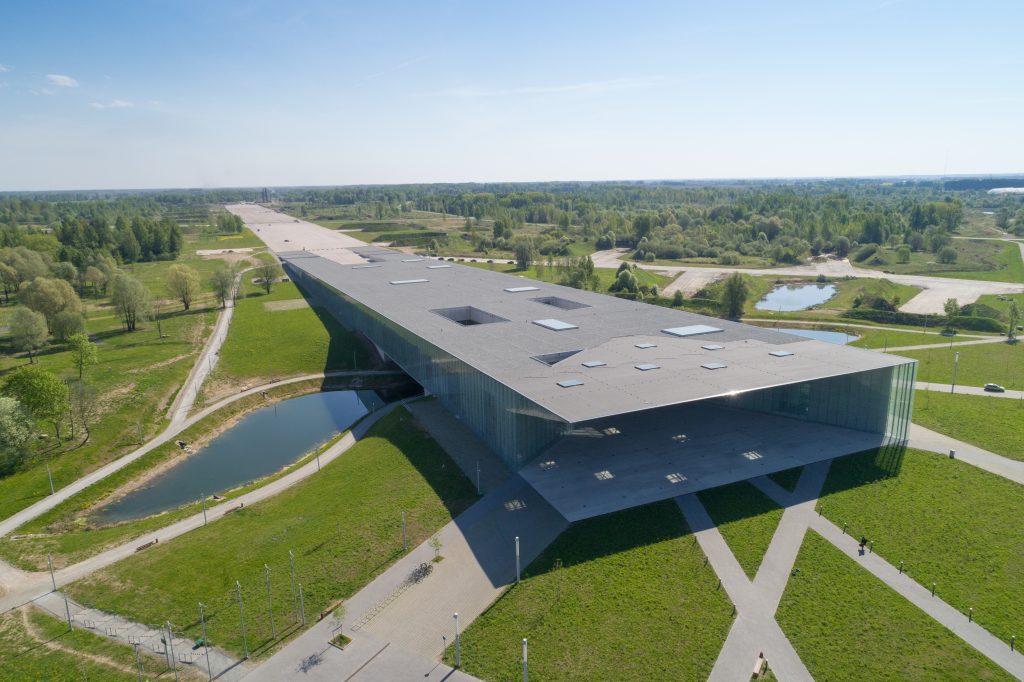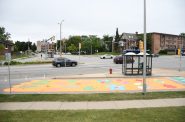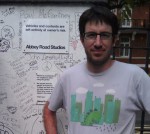What is a Groundscraper?
All the city news you can use.

Estonian National Museum. Photo by Arp Karm, (CC BY-SA 4.0), via Wikimedia Commons
Every day at The Overhead Wire we sort through over 1,500 news items about cities and share the best ones with our email list. At the end of the week, we take some of the most popular stories and share them with Urban Milwaukee readers. They are national (or international) links, sometimes entertaining and sometimes absurd, but hopefully useful.
Philadelphia warehouse boom: All over the Philadelphia region, 55 million square feet of warehousing space has sprung up to serve the demands of online shopping. But as the construction and the truck traffic increases, neighbors are worried about the impacts. One of the newer projects is in the Bellweather District on former oil refinery land just outside the city, but others are springing up on the outskirts to serve demand from Washington, D.C. to New Haven, CT. (Jake Blumgart et al. | Philadelphia Inquirer)
Enter the groundscraper: As opposed to a skyscraper which is a tall vertical building, a groundscraper is a long horizontal building spreading out over a large piece of land. Typically buildings over 1 million square feet can be considered a groundscraper. Proponents argue they are more energy efficient and have less visual impacts, but architects and designers struggle with internal circulation. (Ankitha Gattupalli | ArchDaily)
AI traffic models only as good as input data: With machine learning able to process so much data and information, traffic models are able to absorb more information for transportation planning applications. But the collected data can be limited by a lack of access and standardization. While data used to be from government sources, now it can be collected from any number of places making sorting and organizing the data by machine that much more useful. (Jon Lawson | Traffic Technology International)
Denmark’s 30 year mortgage solution: One of the current issues with the housing market is the number of homeowners staying in their homes because they can’t get a similar very low interest rate for a new purchase compared to the loan they have at the moment. Officials in Denmark have figured out this problem by allowing homeowners to trade up for higher rates while getting profits in return for the exchange. (James Rodriguez | Business Insider)
The fate of humans tied to roadkill: Crossings author Ben Goldfarb discusses why the epidemic of roadkill and the construction of roads everywhere is tied to how we’re treating the planet and how that comes back to impact overall human health. For example, while humans are sometimes run over by car drivers, the impact of noise and air pollution have great impacts on animals and humans alike. (Ben Goldfarb | Slate)
Quote of the Week
My insurance just went up 48% this year. So it’s $8,600 a year just for homeowners insurance. And I’m middle income. I can’t imagine, if you extrapolate that for lower income Americans, how in the world is that sustainable?
–Toni Moss, founder of mortgage and real estate advisory firm AmeriCatalyst in Marketplace discussing rising insurance rates impacts on the housing market and existing residents.
This week on the Talking Headways podcast, we’re joined by Erin Clark, Chief Real Estate Investment Officer of the Denver Housing Authority. We chat about the redevelopment of Sun Valley, a public housing project built in the 1950s that is being reinvigorated by new investments in public housing, parks, and community.
Want more links to read? Visit The Overhead Wire and signup.
Urban Reads
-
Congestion Pricing Cuts Air Pollution in New York City
 Dec 14th, 2025 by Jeff Wood
Dec 14th, 2025 by Jeff Wood
-
We Think We Love to Drive. But Do We Really?
 Dec 7th, 2025 by Jeff Wood
Dec 7th, 2025 by Jeff Wood
-
Can Scott Wiener Tackle America’s Housing Crisis?
 Nov 23rd, 2025 by Jeff Wood
Nov 23rd, 2025 by Jeff Wood





















